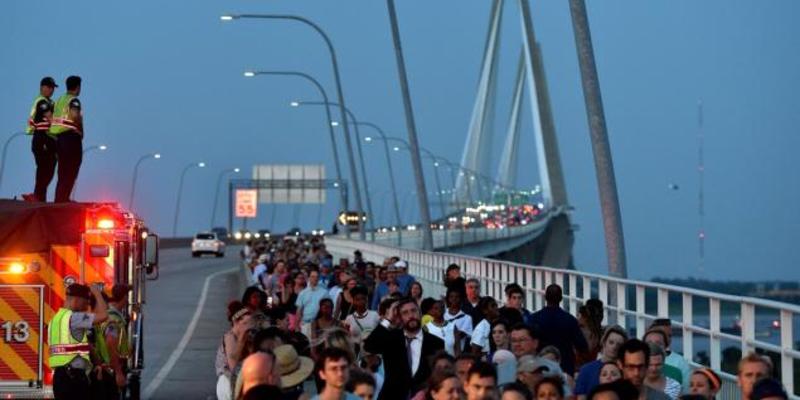Upon sunset the wind swayed the palm trees back and forth as the stickiness of the day’s humidity settled. The sky was purple and a thin bright orange line stood on top of the ocean’s horizon as some sort of lifeline to the day’s activity. Every June evening, this sense of relief washes over Charleston from the bustle of the day’s scorching temperature. However, on this particular June night, Dylann Roof decided to park his car near the Emanuel AME Church.
What would follow would be widely reported, but for now, Charleston experienced it's usual excitement approaching the Independence Day long weekend. Top notch boutiques settled on a high day of trading and seafood restaurants began their staple diet of catfish and grits. Partygoers sipped cocktails under the watchful eye of the city’s church steeples, unaware that they would soon be bewildered by an entourage of police sirens. It was unexpected, but Charleston would soon know that it had been here before.
Otherwise known as the ‘Holy City’ due to the large number of Christian churches, Charleston evokes purity and sacrament that is rare seen elsewhere in South Carolina. It’s a holiday town for those who wish to be nourished and re-born away from the drive and grind of their home cities. It’s common to see men and women sleeping in a meditative like state on the beach. Their bronzed skin will later serve as a reminder of enlightenment and clarity. For now, shorts and a singlet will be the official uniform for those who wish to forget about their reality in less sacred places.
Despite being a promising beacon, Charleston has lived through sinful times. Dating back to the early 19th century, the city's main role was a slave transaction centre for Africans arriving from the Middle Passage. Auction was the name of the game where high labour value was sold at minimal price. African mothers were torn from their children and husbands separated from their loved ones. With the onset of the Civil War, the auctioning of slaves was restricted until Union forces physically occupied Charleston. Since then the city lived through riots, an earthquake, and a hurricane, and is now a peaceful mecca for holidaymakers.
This dichotomy between good and bad played itself out when Dylann Roof killed nine African Americans on that warm June night. Allowing parishioners to pray and study before unleashing his assault added a greater feeling of evil that harked back to the days of slavery. Despite the malevolence, it brought out the best of Charleston’s local residents. The coming together of black, white, religious, and non-religious people was a moving spectacle
as they marched across the Ravenel Bridge. Gospel song broke out among the hordes, the very activity slaves did all those years ago to mourn and celebrate.
While Columbia debated whether the Confederate flag should be removed, the churches of Charleston remained a pulpit of hope and strength. Their steeples stood against a backdrop of blue skies and flying birds, a sight of freedom and a willingness to change with the wind. The shooting will not be forgotten, but Charleston will resume its friendliness and hospitality.

